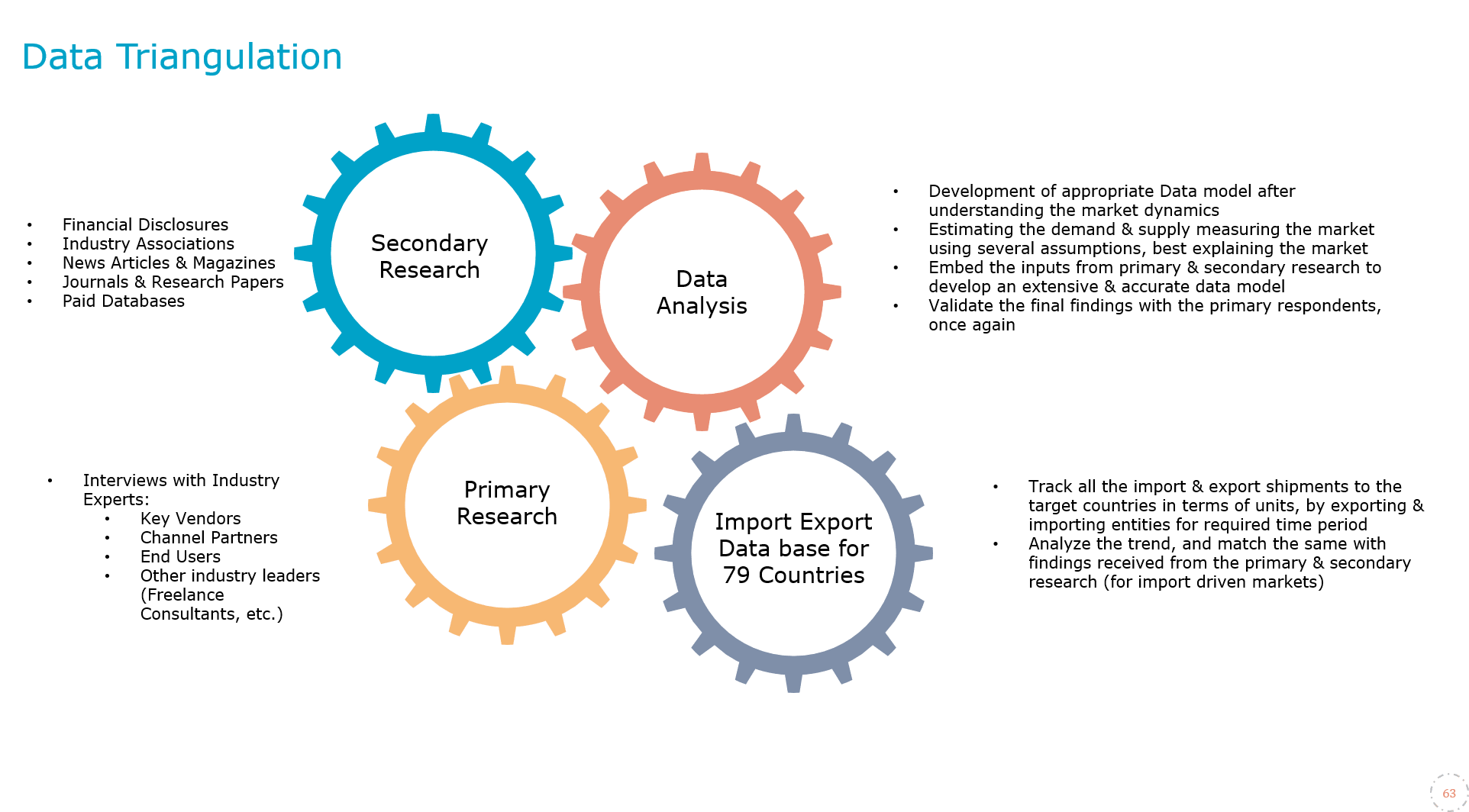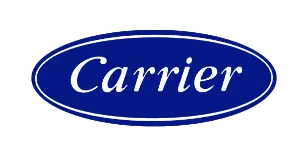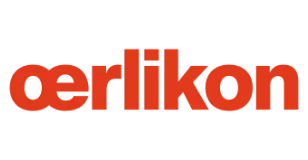
Global Industrial Automation Market Research Report: Forecast (2025-2030)
Industrial Automation Market - By Component (Field Devices, [Industrial Robots, Human Machine Interface (HMI), Control Valves, Sensors, Industrial 3D Printing, Others (Machine Visi...on, Fields Instruments, etc.)], Industrial Control Systems, [Supervisory Control and Data Acquisition (SCADA), Programmable Logic Controller (PLC), Distributed Control System (DCS), Manufacturing Execution System (MES), Product Lifecycle Management (PLM), Others (Industrial Safety, Plant Asset Management (PAM), etc.)], By Level of Automation (Semi-automatic, Fully Automatic), By End User (Automotive, Mining, Water & Wastewater Management, Electronic & Semiconductors, Energy & Power, Food & Beverages, Oil & Gas, Others (Pharmaceuticals, Chemicals, etc.)), Others Read more
- ICT & Electronics
- Mar 2025
- Pages 272
- Report Format: PDF, Excel, PPT
Market Definition
Industrial automation refers to implementing advanced technologies and control systems to automate various manufacturing processes, including assembly, material handling, and production. It includes automation across multiple industries like aerospace, automotive, electronics, food & beverage, pharmaceuticals, etc. This sector leverages robotics augmented with Machine Vision Systems sensors, amongst other cutting-edge technology solutions, to enhance efficiency, productivity, and safety within industrial settings.
Market Insights & Analysis: Global Industrial Automation Market (2025-30):
The Global Industrial Automation Market size was valued at around USD 162 billion in 2023 and is expected to register a CAGR of around 10.8% during the forecast period, i.e., 2025-30. The expansion observed in the Industrial Automation Market is primarily fueled by various factors. In recent years, the industrial sector has undergone fast modifications due to the steady integration of superior technology like robotics, artificial intelligence, and others. These technologies have collectively contributed to the market growth. Furthermore, automation allows for efficient & smart production infrastructure within the industrial areas, thus forcing businesses to utilize automation procedures to manage and enhance productivity with minimal involvement of labor.
| Report Coverage | Details |
|---|---|
| Study Period | Historical Data: 2020-23 |
| Base Year: 2024 | |
| Forecast Period: 2025-30 | |
| CAGR (2025-2030) | 10.8% |
| Regions Covered | North America: US, Canada, Mexico |
| Europe: Germany, The UK, France, Spain, Italy, Rest of Europe | |
| Asia-Pacific: China, India, Japan, South Korea, Australia, Rest of Asia-Pacific | |
| South America: Brazil, Rest of South America | |
| Middle East & Africa: The UAE, Saudi Arabia, South Africa, Rest of MEA | |
| Key Companies Profiled | ABB Ltd., Dwyer Instruments, Emerson Electric Co., Honeywell International, Inc., Kawasaki Heavy Industries, Ltd., Mitsubishi Electric Corporation, OMRON Corporation, Rockwell Automation, Inc., Schneider Electric, Siemens AG, Yokogawa Electric Corporation, Fanuc Corporation, WIKA Gmbh, Stratasys, 3D Systems Corp., and Others |
| Market Value (2023) | USD 162 billion |
Moreover, the integration of the Internet of Things (IoT) in factory automation is propelling the implementation of smart production to leverage the benefits of net connectivity in industries. In addition, the emergence of Industry 4.0 has caused the significant adoption of progressive systems and more suitable networking systems within the industrial manufacturing units, which is expected to boost the marketplace of industrial automation. Each industrial automation system is customized for a particular project, primarily to reduce costs, improve processes and products, enhance operator safety, and increase manufacturing efficiency. Technologies such as analytics, cloud computing, and mobility have helped industries achieve their automation objectives effectively, thereby expanding the size and scope of the industrial automation market in recent years. For instance,
- In 2025, NVIDIA launched NVIDIA Omniverse™ Cloud, which will be available as APIs, extending the reach of the world’s leading platform for creating industrial digital twin applications and workflows across the entire ecosystem of software makers.
The adoption of industrial automation, driven by technological advancements is broadening economic opportunities across industries and increasing the demand for improved operational efficiency. Additionally, the incorporation of innovative technologies such as AI, machine learning, and cloud computing is expected to propel automation advancements, further enhancing the Industrial Automation Market size in the forecast period.
![Industrial Automation Market Size, Share & Industry Growth [2030]](https://www.marknteladvisors.com/public/uploads/infographic/1712072585r.webp)
Global Industrial Automation Market Driver:
Increasing Implementation of Industrial IoT to Boost Market Value – The significance of IoT in industrial automation is boosting the market size worldwide as it facilitates the development and optimization of efficient, economical, and adaptable system frameworks. The integration of Industrial IoT (IIoT) solutions enables connectivity between industrial resources for swift transparency and heightened efficiency. IIoT in conjunction with edge computing simplifies device management throughout its lifecycle across manufacturing processes.
Several companies are implementing their own industrial IoT technology to enhance their efficiency, productivity, and overall performance. One such instance is Siemens, which developed its own industrial IoT offerings, such as MindSphere, Mendix, and IndustrialEdge that rely on automation technologies for insights derived from industrial data. Hence, organizations implement these technologies to streamline their operations while enhancing customer satisfaction. Consequently, there is a projected market growth trajectory due to the widespread adoption and implementation of IIoT within various industries.
Global Industrial Automation Market Opportunity:
Gaining Traction of Industry 5.0 to Cater Lucrative Opportunities to the Industrial Automation Sector – Industry 5.0 aims to perform mass personalization, customization, and optimization of human efficiency with the help of Artificial Intelligence and Digital Twin Technology. Increased automation demand through the deployment of next-generation technology will positively impact many industries. Thus, Industry 5.0 provides greater opportunities for highly automated manufacturing systems and will continue to gain momentum for market expansion. The need for today's industrial automation sector is fast progress in manufacturing techniques and production system digitization and intelligence. With Industry 5.0, the industrial automation market will expand at a large scale in the coming years.
Moreover, Industry 5.0 has opened up new doors for multiple sectors, particularly healthcare where robots are performing medical surgeries in remote regions. This advancement presents fresh prospects like fostering inventive and ingenious ideas, interfacing with technology, supervising COBOTs (Collaborative Robots), devising artificial algorithms, and countless other possibilities. Thus Industry 5.0 is the futuristic industrial revolution for the expansion of industrial automation, which is expected to bring in more creativity and innovation in the products by allowing robots to perform repetitive tasks.
Global Industrial Automation Market Challenge:
High Initial Capital Investments to Impede Market Expansion – Though industrial automation processes offer cost-effectiveness, their implementation requires substantial initial capital investment for technology and employee training. Additionally, due to the fragmented industry nature, it has been challenging to predict return on investments (ROI). As a result of these high upfront expenses and unpredictability surrounding returns on investments, SMEs have been observed to be quite reluctant to embrace these technological advantages. Consequently, the high capital investments and uncertain ROI have been negatively impacting the market growth.
Nevertheless, these challenges have been intended to overcome with the implementation of smart manufacturing in recent years and governmental initiatives such as the MSME business loan program, the Make in India campaign, AMP 2.0, Society 5.0 plan, MIC2025 plan, etc., over the years, paving the way for market expansion worldwide, despite these obstacles.
Global Industrial Automation Market (2025-30): Segmentation Analysis
The Global Industrial Automation Market study by MarkNtel Advisors evaluates & highlights the major trends and influencing factors in each segment & includes predictions for the period 2025-2030 at the global level. In accordance to the analysis, the market has been further classified as:
Based on Component:
- Industrial Robots
- Machine Vision
- Control Valves
- Field Instruments
- Human Machine Interface
- Industrial PC
- Sensors
- Industrial 3D Printing
During 2025-30, the Industrial Robots segment is projected to claim the top spot in the Industrial Automation Market, holding the largest market share. This growth trajectory is attributed to manufacturing firms' utilization of cutting-edge equipment and numerous industrial robots for high-efficiency tasks necessitating speed, power, and precision. Furthermore, the implementation of robotic automation in production processes leads to reduced waste of raw materials, as well as decreased labor requirements & energy consumption. This results in consistent workflows throughout the industries, facilitating market growth across the globe.
Based on Solution:
- Supervisory Control and Data Acquisition (SCADA)
- Programmable Logic Controller (PLC)
- Distributed Control System (DCS)
- Manufacturing Execution System (MES)
- Product Lifecycle Management (PLM)
- Functional Safety and Plant Asset Management (PAM)
The Supervisory Control and Data Acquisition (SCADA) control system segment is expected to grab a significant market share of the Industrial Automation Market, attributed to the adoption of Industry 4.0 principles. SCADA Control Systems are utilized across industry verticals such as aerospace & defense, automotive, chemical, energy & utilities, manufacturing, and healthcare. Its strength lies in collecting real-time information that is quickly fed into controller systems. Additionally, augmented requirements by manufacturers for intelligent and computerized production processes with increased efficiency levels are driving market growth ahead.
Global Industrial Automation Market (2025-30): Regional Projection
Geographically, the Global Industrial Automation Market expands across:
- North America
- South America
- Europe
- The Middle East & Africa
- Asia-Pacific
Over historical years, the Global Industrial Automation Market was majorly dominated by the Asia-Pacific region, as in 2023, the region held a market share of around 38% in the industrial automation market. This dominance is projected to continue during the forecast period i.e. 2025-30, owing to a gradual expansion of the industrial base in India, China, Japan, Vietnam, Indonesia, Philippines, etc. The increasing desire of several manufacturing units to upgrade the industrial plant management solutions that meet the growing demands for the automated industrial sector, most significantly in India and China, has become a key driver of regional market growth.
Moreover, in recent years, the trend of replacing conventional production facilities with smart production hubs has led to widespread acceptance of industrial automation and further fueled growth in the marketplace throughout the entire Asian-Pacific sector.
Global Industrial Automation Industry Recent Development:
- 2025: Polysciences Inc., a leading chemical manufacturer partnered with Formic Automation to integrate automation into their manufacturing processes. Polysciences intended to increase operational efficiency by minimizing manual tasks that were becoming a production bottleneck and reducing the OPEX by 35%.
- 2023: ABB India secured a contract to provide electrification and automation systems for ArcelorMittal Nippon Steel India's (AM/NS India) advanced steel cold rolling mill in Hazira, Gujarat. The project includes the installation of the ABB Ability System 800xA distributed control system along with relevant machinery and supplies.
- 2022: Dwyer Instruments launched the Series 685 differential pressure transmitter. These transmitters can be set up in any orientation and come equipped with a response time that is adaptable as per user preferences, eliminating the need for external calibration equipment.
Gain a Competitive Edge with Our Global Industrial Automation Market Report
- Global Industrial Automation Market Report by MarkNtel Advisors provides a detailed & thorough analysis of market size & share, growth rate, competitive landscape, and key players. This comprehensive analysis helps businesses gain a holistic understanding of the market dynamics & make informed decisions.
- This report also highlights current market trends & future projections, allowing businesses to identify emerging opportunities & potential challenges. By understanding market forecasts, companies can align their strategies & stay ahead of the competition.
- Global Industrial Automation Market Report aids in assessing & mitigating risks associated with entering or operating in the market. By understanding market dynamics, regulatory frameworks, and potential challenges, businesses can develop strategies to minimize risks & optimize their operations.
*Reports Delivery Format - Market research studies from MarkNtel Advisors are offered in PDF, Excel and PowerPoint formats. Within 24 hours of the payment being successfully received, the report will be sent to your email address.
Frequently Asked Questions
- Market Segmentation
- Introduction
- Product Definition
- Research Process
- Assumptions
- Executive Summary
- Global Industrial Automation Market Trends & Developments
- Global Industrial Automation Market Dynamics
- Growth Drivers
- Challenges
- Global Industrial Automation Market Hotspot & Opportunities
- Global Industrial Automation Market Supply Chain Analysis
- Global Industrial Automation Market Outlook, 2020-2030
- Market Size & Analysis
- By Revenues (USD Million)
- Market Share & Analysis
- By Component
- Field Devices
- Industrial Robots- Market Size & Forecast 2020-2030, (USD Million)
- Human Machine Interface (HMI)- Market Size & Forecast 2020-2030, (USD Million)
- Control Valves- Market Size & Forecast 2020-2030, (USD Million)
- Sensors- Market Size & Forecast 2020-2030, (USD Million)
- Industrial 3D Printing- Market Size & Forecast 2020-2030, (USD Million)
- Others (Machine Vision, Fields Instruments, etc.)- Market Size & Forecast 2020-2030, (USD Million)
- Industrial Control Systems
- Supervisory Control and Data Acquisition (SCADA)- Market Size & Forecast 2020-2030, (USD Million)
- Programmable Logic Controller (PLC)- Market Size & Forecast 2020-2030, (USD Million)
- Distributed Control System (DCS)- Market Size & Forecast 2020-2030, (USD Million)
- Manufacturing Execution System (MES)- Market Size & Forecast 2020-2030, (USD Million)
- Product Lifecycle Management (PLM)- Market Size & Forecast 2020-2030, (USD Million)
- Others (Industrial Safety, Plant Asset Management (PAM), etc.)- Market Size & Forecast 2020-2030, (USD Million)
- Field Devices
- By Level of Automation
- Semi-automatic- Market Size & Forecast 2020-2030, (USD Million)
- Fully Automatic- Market Size & Forecast 2020-2030, (USD Million)
- By End User
- Automotive- Market Size & Forecast 2020-2030, (USD Million)
- Mining- Market Size & Forecast 2020-2030, (USD Million)
- Water & Wastewater Management- Market Size & Forecast 2020-2030, (USD Million)
- Electronic & Semiconductors- Market Size & Forecast 2020-2030, (USD Million)
- Energy- Market Size & Forecast 2020-2030, (USD Million) & Power
- Food & Beverages- Market Size & Forecast 2020-2030, (USD Million)
- Oil & Gas- Market Size & Forecast 2020-2030, (USD Million)
- Others (Pharmaceuticals, Chemicals, etc.) - Market Size & Forecast 2020-2030, (USD Million)
- By Region
- North America
- South America
- Europe
- The Middle East & Africa
- Asia-Pacific
- By Company
- Competition Characteristics
- Revenue Shares & Analysis
- By Component
- Market Size & Analysis
- North America Industrial Automation Market Outlook, 2020-2030
- Market Size & Analysis
- By Revenues (USD Million)
- Market Share & Analysis
- By Component- Market Size & Forecast 2020-2030, (USD Million)
- By Level of Automation- Market Size & Forecast 2020-2030, (USD Million)
- By End User- Market Size & Forecast 2020-2030, (USD Million)
- By Country Market Size & Forecast 2020-2030, (USD Million)
- The US
- Canada
- Mexico
- The US Industrial Automation Market Outlook, 2020-2030
- Market Size & Analysis
- By Revenues (USD Million)
- Market Share & Analysis
- By Component- Market Size & Forecast 2020-2030, (USD Million)
- By Level of Automation- Market Size & Forecast 2020-2030, (USD Million)
- By End User- Market Size & Forecast 2020-2030, (USD Million)
- Market Size & Analysis
- Canada Industrial Automation Market Outlook, 2020-2030
- Market Size & Analysis
- By Revenues (USD Million)
- Market Share & Analysis
- By Component- Market Size & Forecast 2020-2030, (USD Million)
- By Level of Automation- Market Size & Forecast 2020-2030, (USD Million)
- By End User- Market Size & Forecast 2020-2030, (USD Million)
- Market Size & Analysis
- Mexico Industrial Automation Market Outlook, 2020-2030
- Market Size & Analysis
- By Revenues (USD Million)
- Market Share & Analysis
- By Component- Market Size & Forecast 2020-2030, (USD Million)
- By Level of Automation- Market Size & Forecast 2020-2030, (USD Million)
- By End User- Market Size & Forecast 2020-2030, (USD Million)
- Market Size & Analysis
- Market Size & Analysis
- South America Industrial Automation Market Outlook, 2020-2030
- Market Size & Analysis
- By Revenues (USD Million)
- Market Share & Analysis
- By Component- Market Size & Forecast 2020-2030, (USD Million)
- By Level of Automation- Market Size & Forecast 2020-2030, (USD Million)
- By End User- Market Size & Forecast 2020-2030, (USD Million)
- By Country- Market Size & Forecast 2020-2030, (USD Million)
- Brazil
- Rest of South America
- Brazil Industrial Automation Market Outlook, 2020-2030
- Market Size & Analysis
- By Revenues (USD Million)
- Market Share & Analysis
- By Component- Market Size & Forecast 2020-2030, (USD Million)
- By Level of Automation- Market Size & Forecast 2020-2030, (USD Million)
- By End User- Market Size & Forecast 2020-2030, (USD Million)
- Market Size & Analysis
- Market Size & Analysis
- Europe Industrial Automation Market Outlook, 2020-2030
- Market Size & Analysis
- By Revenues (USD Million)
- Market Share & Analysis
- By Component- Market Size & Forecast 2020-2030, (USD Million)
- By Level of Automation- Market Size & Forecast 2020-2030, (USD Million)
- By End User- Market Size & Forecast 2020-2030, (USD Million)
- By Country- Market Size & Forecast 2020-2030, (USD Million)
- Germany
- The UK
- France
- Italy
- Spain
- Rest of Europe
- Germany Industrial Automation Market Outlook, 2020-2030
- Market Size & Analysis
- By Revenues (USD Million)
- Market Share & Analysis
- By Component- Market Size & Forecast 2020-2030, (USD Million)
- By Level of Automation- Market Size & Forecast 2020-2030, (USD Million)
- By End User- Market Size & Forecast 2020-2030, (USD Million)
- Market Size & Analysis
- The UK Industrial Automation Market Outlook, 2020-2030
- Market Size & Analysis
- By Revenues (USD Million)
- Market Share & Analysis
- By Component- Market Size & Forecast 2020-2030, (USD Million)
- By Level of Automation- Market Size & Forecast 2020-2030, (USD Million)
- By End User- Market Size & Forecast 2020-2030, (USD Million)
- Market Size & Analysis
- France Industrial Automation Market Outlook, 2020-2030
- Market Size & Analysis
- By Revenues (USD Million)
- Market Share & Analysis
- By Component- Market Size & Forecast 2020-2030, (USD Million)
- By Level of Automation- Market Size & Forecast 2020-2030, (USD Million)
- By End User- Market Size & Forecast 2020-2030, (USD Million)
- Market Size & Analysis
- Italy Industrial Automation Market Outlook, 2020-2030
- Market Size & Analysis
- By Revenues (USD Million)
- Market Share & Analysis
- By Component- Market Size & Forecast 2020-2030, (USD Million)
- By Level of Automation- Market Size & Forecast 2020-2030, (USD Million)
- By End User- Market Size & Forecast 2020-2030, (USD Million)
- Market Size & Analysis
- Spain Industrial Automation Market Outlook, 2020-2030
- Market Size & Analysis
- By Revenues (USD Million)
- Market Share & Analysis
- By Component- Market Size & Forecast 2020-2030, (USD Million)
- By Level of Automation- Market Size & Forecast 2020-2030, (USD Million)
- By End User- Market Size & Forecast 2020-2030, (USD Million)
- Market Size & Analysis
- Market Size & Analysis
- The Middle East & Africa Industrial Automation Market Outlook, 2020-2030
- Market Size & Analysis
- By Revenues (USD Million)
- Market Share & Analysis
- By Component- Market Size & Forecast 2020-2030, (USD Million)
- By Level of Automation- Market Size & Forecast 2020-2030, (USD Million)
- By End User- Market Size & Forecast 2020-2030, (USD Million)
- By Country- Market Size & Forecast 2020-2030, (USD Million)
- The UAE
- Saudi Arabia
- South Africa
- Rest of MEA
- The UAE Industrial Automation Market Outlook, 2020-2030
- Market Size & Analysis
- By Revenues (USD Million)
- Market Share & Analysis
- By Component- Market Size & Forecast 2020-2030, (USD Million)
- By Level of Automation- Market Size & Forecast 2020-2030, (USD Million)
- By End User- Market Size & Forecast 2020-2030, (USD Million)
- Market Size & Analysis
- Saudi Arabia Industrial Automation Market Outlook, 2020-2030
- Market Size & Analysis
- By Revenues (USD Million)
- Market Share & Analysis
- By Component- Market Size & Forecast 2020-2030, (USD Million)
- By Level of Automation- Market Size & Forecast 2020-2030, (USD Million)
- By End User- Market Size & Forecast 2020-2030, (USD Million)
- Market Size & Analysis
- South Africa Industrial Automation Market Outlook, 2020-2030
- Market Size & Analysis
- By Revenues (USD Million)
- Market Share & Analysis
- By Component- Market Size & Forecast 2020-2030, (USD Million)
- By Level of Automation- Market Size & Forecast 2020-2030, (USD Million)
- By End User- Market Size & Forecast 2020-2030, (USD Million)
- Market Size & Analysis
- Market Size & Analysis
- Asia-Pacific Industrial Automation Market Outlook, 2020-2030
- Market Size & Analysis
- By Revenues (USD Million)
- Market Share & Analysis
- By Component- Market Size & Forecast 2020-2030, (USD Million)
- By Level of Automation- Market Size & Forecast 2020-2030, (USD Million)
- By End User- Market Size & Forecast 2020-2030, (USD Million)
- By Country- Market Size & Forecast 2020-2030, (USD Million)
- China
- India
- Japan
- South Korea
- Australia
- Rest of Asia-Pacific
- China Industrial Automation Market Outlook, 2020-2030
- Market Size & Analysis
- By Revenues (USD Million)
- Market Share & Analysis
- By Component- Market Size & Forecast 2020-2030, (USD Million)
- By Level of Automation- Market Size & Forecast 2020-2030, (USD Million)
- By End User- Market Size & Forecast 2020-2030, (USD Million)
- Market Size & Analysis
- India Industrial Automation Market Outlook, 2020-2030
- Market Size & Analysis
- By Revenues (USD Million)
- Market Share & Analysis
- By Component- Market Size & Forecast 2020-2030, (USD Million)
- By Level of Automation- Market Size & Forecast 2020-2030, (USD Million)
- By End User- Market Size & Forecast 2020-2030, (USD Million)
- Market Size & Analysis
- Japan Industrial Automation Market Outlook, 2020-2030
- Market Size & Analysis
- By Revenues (USD Million)
- Market Share & Analysis
- By Component- Market Size & Forecast 2020-2030, (USD Million)
- By Level of Automation- Market Size & Forecast 2020-2030, (USD Million)
- By End User- Market Size & Forecast 2020-2030, (USD Million)
- Market Size & Analysis
- South Korea Industrial Automation Market Outlook, 2020-2030
- Market Size & Analysis
- By Revenues (USD Million)
- Market Share & Analysis
- By Component- Market Size & Forecast 2020-2030, (USD Million)
- By Level of Automation- Market Size & Forecast 2020-2030, (USD Million)
- By End User- Market Size & Forecast 2020-2030, (USD Million)
- Market Size & Analysis
- Australia Industrial Automation Market Outlook, 2020-2030
- Market Size & Analysis
- By Revenues (USD Million)
- Market Share & Analysis
- By Component- Market Size & Forecast 2020-2030, (USD Million)
- By Level of Automation- Market Size & Forecast 2020-2030, (USD Million)
- By End User- Market Size & Forecast 2020-2030, (USD Million)
- Market Size & Analysis
- Market Size & Analysis
- Global Industrial Automation Market Key Strategic Imperatives for Success & Growth
- Competition Outlook
- Company Profiles
- ABB Ltd.
- Business Description
- Product Portfolio
- Strategic Alliances or Partnerships
- Recent Developments
- Financial Details
- Others
- Dwyer Instruments
- Business Description
- Product Portfolio
- Strategic Alliances or Partnerships
- Recent Developments
- Financial Details
- Others
- Emerson Electric Co.
- Business Description
- Product Portfolio
- Strategic Alliances or Partnerships
- Recent Developments
- Financial Details
- Others
- Honeywell International, Inc.
- Business Description
- Product Portfolio
- Strategic Alliances or Partnerships
- Recent Developments
- Financial Details
- Others
- Kawasaki Heavy Industries, Ltd.
- Business Description
- Product Portfolio
- Strategic Alliances or Partnerships
- Recent Developments
- Financial Details
- Others
- Mitsubishi Electric Corporation
- Business Description
- Product Portfolio
- Strategic Alliances or Partnerships
- Recent Developments
- Financial Details
- Others
- OMRON Corporation
- Business Description
- Product Portfolio
- Strategic Alliances or Partnerships
- Recent Developments
- Financial Details
- Others
- Rockwell Automation, Inc.
- Business Description
- Product Portfolio
- Strategic Alliances or Partnerships
- Recent Developments
- Financial Details
- Others
- Schneider Electric
- Business Description
- Product Portfolio
- Strategic Alliances or Partnerships
- Recent Developments
- Financial Details
- Others
- Siemens AG
- Business Description
- Product Portfolio
- Strategic Alliances or Partnerships
- Recent Developments
- Financial Details
- Others
- Yokogawa Electric Corporation
- Business Description
- Product Portfolio
- Strategic Alliances or Partnerships
- Recent Developments
- Financial Details
- Others
- General Electric (GE) Company
- Business Description
- Product Portfolio
- Strategic Alliances or Partnerships
- Recent Developments
- Financial Details
- Others
- STMicroelectronics International N.V.
- Business Description
- Product Portfolio
- Strategic Alliances or Partnerships
- Recent Developments
- Financial Details
- Others
- Robert Bosch Gmbh (Bosch Group)
- Business Description
- Product Portfolio
- Strategic Alliances or Partnerships
- Recent Developments
- Financial Details
- Others
- WAGO Global
- Business Description
- Product Portfolio
- Strategic Alliances or Partnerships
- Recent Developments
- Financial Details
- Others
- Others
- ABB Ltd.
- Company Profiles
- Disclaimer
MarkNtel Advisors follows a robust and iterative research methodology designed to ensure maximum accuracy and minimize deviation in market estimates and forecasts. Our approach combines both bottom-up and top-down techniques to effectively segment and quantify various aspects of the market. A consistent feature across all our research reports is data triangulation, which examines the market from three distinct perspectives to validate findings. Key components of our research process include:
1. Scope & Research Design At the outset, MarkNtel Advisors define the research objectives and formulate pertinent questions. This phase involves determining the type of research—qualitative or quantitative—and designing a methodology that outlines data collection methods, target demographics, and analytical tools. They also establish timelines and budgets to ensure the research aligns with client goals.
2. Sample Selection and Data Collection In this stage, the firm identifies the target audience and determines the appropriate sample size to ensure representativeness. They employ various sampling methods, such as random or stratified sampling, based on the research objectives. Data collection is carried out using tools like surveys, interviews, and observations, ensuring the gathered data is reliable and relevant.
3. Data Analysis and Validation Once data is collected, MarkNtel Advisors undertake a rigorous analysis process. This includes cleaning the data to remove inconsistencies, employing statistical software for quantitative analysis, and thematic analysis for qualitative data. Validation steps are taken to ensure the accuracy and reliability of the findings, minimizing biases and errors.

4. Data Forecast and FinalizationThe final phase involves forecasting future market trends based on the analyzed data. MarkNtel Advisors utilize predictive modeling and time series analysis to anticipate market behaviors. The insights are then compiled into comprehensive reports, featuring visual aids like charts and graphs, and include strategic recommendations to inform client decision-making









